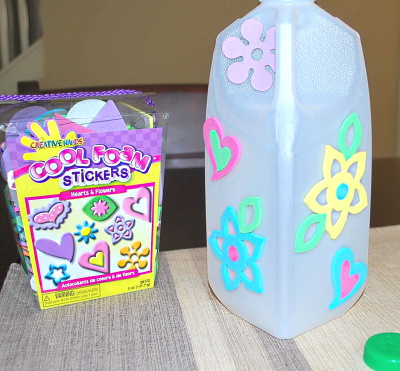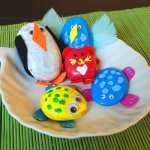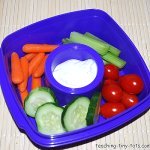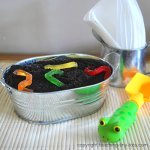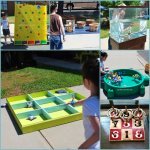Recycle a Milk Jug Into a Watering Jug
Description
A green craft! Planting a garden or some flowers? Make a recycled watering can with your child using a milk or juice jug. Have fun decorating it and let your child help water the garden or potted plants.
Materials
- 1/2 gallon milk or juice jug thoroughly rinsed with cap(s)
- Small Nail and Hammer
- Foam Stickers
Other Decoration Ideas
- Acrylic Paint
- Stamps
- Paint Pens
Steps
- Rinse a 1/2 gallon milk jug thoroughly and remove label.
- When dry, adhere stickers of choice.
- Adult Step: Find a flat surface and protect it with a cutting board or flat piece of wood. Place a place mat or kitchen towel over the board. This will help keep the cap from slipping as you make holes. Holding a nail, gently use hammer to make a hole. It takes very little hammering for the nail to puncture the cap.
- Repeat until you have about 6 to 9 holes. Depending on size of the garden or plants, adjust the size of the hole.
Tips and Suggestions
- Keep an additional cap so you can make two different size holes to adjust to different watering conditions. Small house plants in pots you might want a smaller hole and
outdoor gardens, a larger set of holes.
- Over time the watering can may lose the stickers but you can simply send in the jug for recycling and create a new one!
Other Ideas
Use the other suggested materials to decorate your jug. If you glue on items you will have to use a craft glue that can withstand water. WE found the foam stickers held up very well under repeated use even with it getting wet on occasion while filling up the jug.
Educational Note
A book is a great way to introduce a science activity.
Go to the library or a bookstore and find a book on recycling or Earth Day. Check out our other Green crafts in our Science section of our site.
Scientific Processes
Observation
- Seeing Pictures in a book or online. If you Google "garbage dump picture" you can get pictures to help show what garbage accumulation looks like.
- Hearing and listening to directions given.
Communication
- Oral Explanation of why it is important to recycle.
- Pictorial Showing pictures in a book
